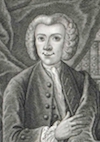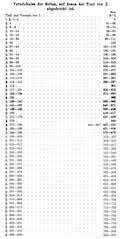| HOME |
LO |
[A (XXV.37)] [B (XXV.37a)] [C (XXV.46a)] |
Logic
|
|---|
 Kant  Herder
Notes from Kant’s
|
|
[ Introduction ] [ Metaphysics ] [ Moral Phil. ] [ Physical Geogr. ] [ Logic ] [ Physics ] [ Math. ] [ Varia ] How to Use these Pages ➝ to the transcriptsManuscripts: The few pages we have of logic notes stem from four manuscript groups that are accessed by clicking on the red-links in the light yellow window at the top of the page (e.g., [XXV.37]). Explanatory Notes / Textual Notes: There are two windows with notes: explanatory and textual. The text in those windows on this page explains what you will find in them. [ Introduction ] [ Overview of the Logic Lectures ] [ List of Manuscripts ] [ Concordance ] IntroductionHerder’s notes on Logic consist of a little over eight 8° pages of text, spread over four different manuscripts. Kant lectured on logic every semester during Herder’s years at the university and the notes cannot be more closely dated than 1762-1764. Previous transcriptions of these notes can be found in Irmscher (1964, 43-7) and Lehmann (1966, AA 24: 3-6, 1099-1100) [list of errata]. Overview of the Logic Lectures [top]Kant lectured on logic a total of fifty-six times – more than on any other subject, and nearly every semester that he was a Privatdozent, reduced to every summer semester after his promotion to Professor of Logic and Metaphysics. The extant student notes from these lectures span from the fragmentary Herder (1762-64) to Bauch (1794). We know of twenty-six sets of notes with nineteen available at least in part. Nine of the manuscripts appear to be complete, and a tenth (Volckmann) is a very large fragment. Three sets (Warsaw, Bauch, Hechsel) are published in Pinder (1998), a five page fragment (Grünheide) is published in Kowalewski (2000), and Volckmann, having been recovered only in 2000, remains unpublished. Jäsche claimed that his 1800 Logic solely was based on Kant’s reflections written down in his copy of Meier’s Auszüge (1752), but it soon became clear to Kant scholars (Erdmann 1880; Heinze 1894; Schlapp 1901) that one or more sets of student notes also entered into the text: these lost notes we designate as Jäsche. Five (or six) sets of notes (Hechsel, Pölitz, Warsaw, Vienna, Hoffmann, Jäsche?) are related in a complicated and yet to be fully explicated fashion, with at least one source lecture from 1780-82. Four other sets of notes (Blomberg, Bauch, Grünheide, Philippi) are closely related with their source lecture in the early 1770s. This leaves us with the following nine available sets of notes: Herder (1762-64; AA 24: 3-6, 1099-1100, and a few previously unpublished fragments), the Blomberg group (early 1770s; AA 24: 9-301), Hintz (1775; AA 24: 943-44), the Hechsel group (1780-82; Pinder 1998: 271-499), Volckmann (early 1780s), Mrongovius (1784?; AA 24: 1043-47), Busolt (1789; AA 24: 605-86), Dohna-Wundlacken (1792; AA 24: 689-784), and a fragment from Vigilantius (1793; Hinske 1991: 150). While the notes are scant, their provenance is unambiguous. The only other logic lectures that Herder might have attended would have been those offered by Friedrich Johann Buck (1722-1786), the Professor of Metaphysics and Logic at the time, who would have offered free (public) lectures on logic every summer. But Buck taught from Crusius’s logic textbook[1] and the Herder notes are clearly based on Meier’s text; no one other than Kant was lecturing on Meier. Outline of the Meier Textbook Georg Friedrich Meier (1718-1777), a professor of philosophy at Halle, published two logic texts in 1752: his Vernunftlehre, consisting of 630 sections, and his shorter Auszug aus der Vernunftlehre, consisting of 563 sections. Kant’s interleaved copy of the Auszug is extant,[2] and appears to be the same textbook described by one student from the 1790s as being... “... so old and soiled, I believe that he has brought it daily to class with him for forty years. All the blank leaves are covered with writing in a small hand, and besides, many of the printed pages have leaves pasted on them, and lines are frequently crossed out, so that, as you might imagine, scarcely anything of Meyer’s Logic is left.” [Hugelmann 1879, 608-10] If Kant began with the longer textbook, he quickly changed to the shorter and more student-friendly Auszug, which he specifies as using in his lecture announcement for summer 1757 (included with the essay on “West Winds”): “Logic will be read following Meier’s short introduction” (AA 2: 4). Meier’s Auszug is reprinted in AA 16 along with Kant’s annotations, and a table (printed at AA 16: xv-xvi) connecting the 563 sections of Meier’s Auszug and the pagination of volume 16 is provided here. Georg Friedrich Meier, Auszug aus der Vernunftlehre. Halle: Johann Justinus Gebauer, 1752. Introduction to the doctrine of reason (§§1-9) I. Of Learned Cognition (§§10-413) (1) Of learned cognition in general (§§10-40). (2) Of the extensiveness of learned cognition (§§41-65). (3) Of the quantity of learned cognition (§§66-91). (4) Of the truth of learned cognition (§§92-114). (5) Of the clarity of learned cognition (§§115-54). (6) Of the certainty of learned cognition (§§155-215). (7) Of practical learned cognition (§§216-48). (8) Of learned concepts (§§249-91). (9) Of learned judgments (§§292-352). (10) Of learned inferences of reason (§§353-413). II. Of the Method of Learned Cognition (§§414-38) III. Of Learned Exposition (§§439-26) IV. Of the Character of a Learned Man (§§527-63) List of Manuscripts [top]We have four fragments on logic from Herder’s Nachlaß, all housed in the Staatsbibliothek zu Berlin – Preußischer Kulturbesitz: XXV.37 (8°, 10.25 x 15.5 cm): 4 pp. Text in pencil. [37(A)] XXV.37a (8°, 10.25 x 15.5 cm): 2 pp. Text in pencil. [37a(B)] XXV.46a: Two signatures, with one-half page and one full page of logic notes, respectively. (1) 1 p. (8°, 8.25 x 14 cm): Text in pencil. [46a(C-1)] (2) 1 p. (8°, 10.5 x 16 cm): Text in pencil. [46a(C-2] A fifth fragment – just four lines, mixed in with a signature from XXV.44a of notes on physical geography – is more likely written in preparation for Herder’s own teaching (perhaps at the Riga school); it is included with the Varia. |
Concordance with Irmscher (1964) and the Academy Edition (1966) [top]
| Irmscher 1964 | Lehmann 1966 | Manuscript | Meier §§ | Length |
|---|---|---|---|---|
| 43-47 | 24: 3-6 | XXV.37 | §§1-3, 6, 30, 32, 36-38, 41-45 | 4 pp. |
| -- | 24: 1099-1100 | XXV.37a | §§177, 179, 258-59, 262-66 | 2 pp. |
| -- | -- | XXV.46a | §§207, 255-58 | 2 pp. |

